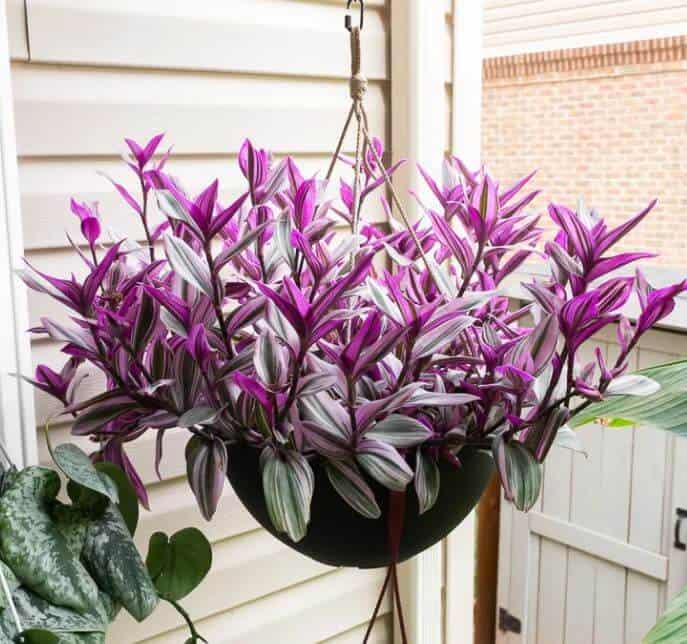Last Updated on January 5, 2023 by a Friendly Gardener
If you are a Tradescantia enthusiast, the Fantasy Venice plant is a must for your home garden. The most well-known Tradescantia is probably a Wandering Jew with its striped foliage that boasts deep purple undersides. Where the Fantasy Venice plant shines though is in its talent for producing spectacular blossoms.
If you like the idea of lush, variegated foliage, then consider adding a Fantasy Venice plant to your indoor décor. Known as the Tradescantia Nanouk plant, the Fantasy Venice is a patented tradescantia cultivar.
Bred in 2012 in the Netherlands, this cultivar was created while breeders were attempting to produce smaller, hardier plants with vibrant blooms. The indigenous parentage of this cultivar can be found in Central and South America together with Mexico. Belonging to the Commelinaceae family, these herbaceous plants are perennials that boast sturdier leaves in dark green with purple variegations. The Fantasy Venice plant has a growing habit that makes it ideal for decorating accents indoors or for landscaping necessities outdoors.
The Venice Fantasy is a compact plant that however will flame outward making it fantastic for hanging baskets. Showy, bright blooms only add to its allure during the growing season.
Fantasy Venice Plant Care
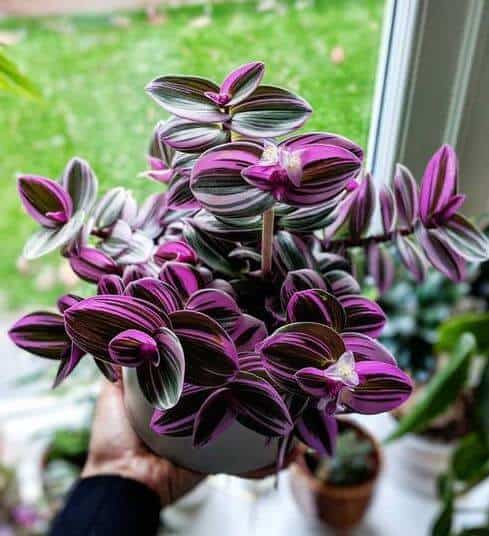
Like many houseplants, pink or white blossoms will emerge in spring and last through the beginning of the fall. If cultivating indoors where environmental temps are easier to control can permit this plant to bloom even in winter. Flowers begin as pink buds that then continue to reproduce using cross-pollination.
A fast grower, the Tradescantia Nanouk will maintain a compact appearance that maintains an even growth pattern. Most Fantasy Venice plants will grow to a height of approximately 3.5 inches and feature thick stems and foliage featuring a somewhat hairy underside. As a variegated cultivar, plants will feature variations of pink, cream, gray, and light purple.
Soil
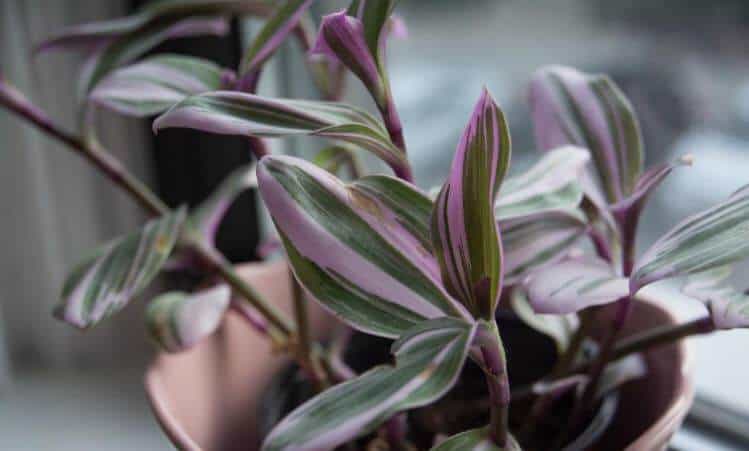
Because this plant is not particularly fussy about soil types, it does well in all-purpose nutrient-rich potting soil. But it does require a certain amount of humidity, so you may want to amend the soil mix to improve moisture retention.
Consider adding several fistfuls of vermiculite or peat moss. Blend in a fistful of coarse sand or perlite to guarantee drainage. To improve soil nutrients, blend in some compost or apply organic mulch. Mulching will aid with moisture retention while not impeding drainage. Soil pH should be slightly acidic and measure between 5 and 6. The soil should remain loose, as compacted soil can lead to root rot.
Light
Indoor cultivation of the Tradescantia Nanouk requires a position with bright indirect light exposure. With adequate indirect light, there is a better chance that your plant will flower in the growing season. If this plant is cultivated in low light conditions, it may suffer from etiolation which alters the appearance of the plant and tradescantia foliage will fade and appear pale. Generous bright indirect light is crucial to your plant’s health.
Water
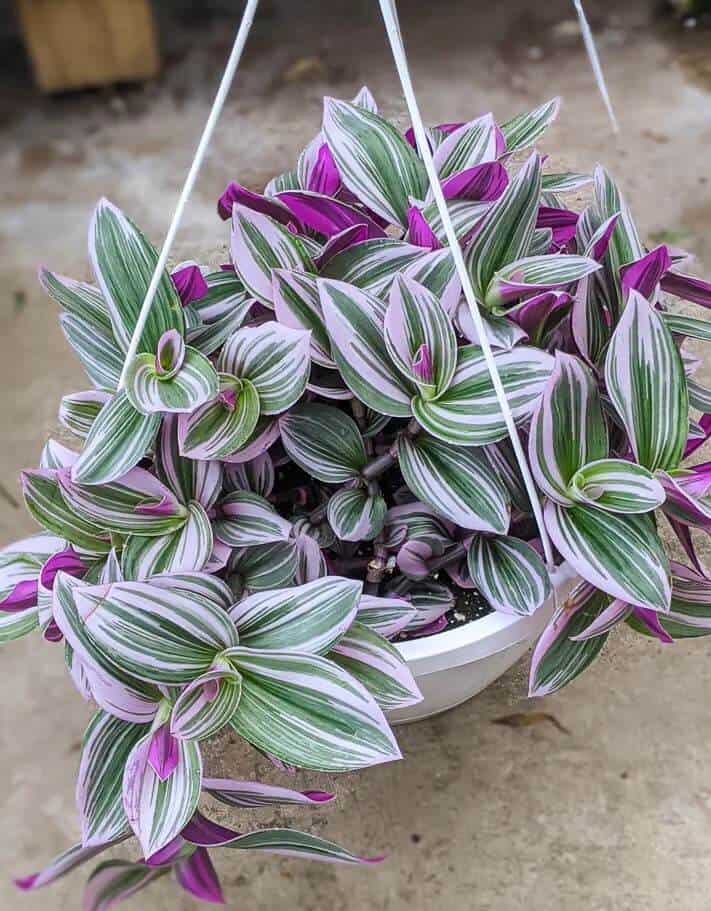
The most important thing to remember about the Nanouk Tradescantia plant is that they suffer when overwatered. It’s much better to allow the soil bed to dry out somewhat before watering. Then soak your plant and allow excess water to drain away before returning t to its location. Plan on watering weekly during the warmer growing season months. However, the soil should never be allowed to become soggy or waterlogged. If your plant’s foliage becomes dull, check to see that the soil is not too wet.
Humidity
The Fantasy Venice plant boasts thick and lush foliage, so it can do with a higher humidity level. The ideal room is a bathroom, but you can use a space humidifier or pebble tray if you want to place it in another spot. Foliage can be misted but take care not to overdo it. The thick leaves will retain some moisture on their own.
Temperature
To satisfy this plant’s environmental needs, the average indoor environmental temperature should measure between 55° and 75°F. It can be cultivated outdoors in USDA hardiness zones 10 through 12. The Fantasy Venice plant prefers that temperatures not drop below 50°F. It is not a frost-tolerant plant.
Feeding
Tradescantia cultivars do not feed heavily, so it won’t be obligatory to fertilize. If you overfertilize your plant, the leaf trips may turn brown. If you want to give your plant a boost, dilute an organic houseplant fertilizer to use monthly during the growing season. Recommended liquid fertilizers include blood meal, bone meal, or fish emulsion.
Pruning
To encourage growth, prune foliage back regularly. Keep an eye on this plant for leggy growth which usually is due to inadequate lighting. Remove weak stems and faded leaves. Check to see if your plant will be better served by a sunnier location. Never prune more than a third of the plant at any one time.
Potting and Repotting
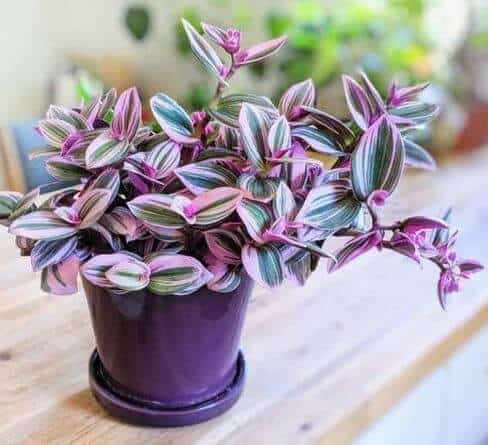
As a hanging plant, there will not be much need for repotting unless the plant becomes rootbound or the old soil is lacking in nutrients.
Fantasy Venice Plant Propagation
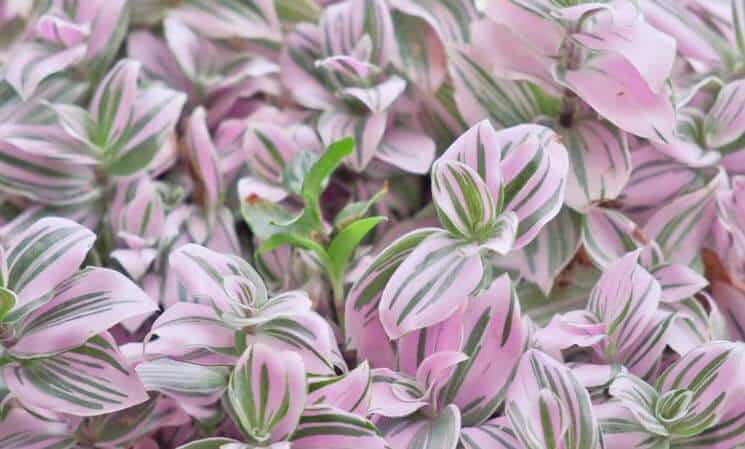
Propagating your Fantasy Venice plant is relatively easy.
- Take stem cuttings with 2 or 3 sets of leaves from the mother plant but remove lower leaves.
- Place your stem cutting into a clear jar filled with water. Each cutting should have its own jar or glass.
- Put the jar in a warm spot with good indirect exposure to bright light.
- After several weeks, roots will emerge from leaf nodes positioned underwater.
- Once the roots are approximately 2 inches long, you can transfer them into individual pots with soil mix.
Tip: Cuttings can also be propagated using soil instead of water following the same steps by placing cuttings in a moistened soil mix.
Fantasy Venice Plant Problems
Overwatering is one of the biggest risks. Foliage may lose its color and root rot can set in with excessive watering or with faulty drainage. Excessive moisture leads to fungal infection. Try to keep the soil evenly moist, never soggy, and never completely dry. Allow the soil bed to dry out a bit before watering.
Inadequate light is another problem for tradescantia cultivars. These plants become leggy if the environmental light is insufficient.
Pests to be aware of include mealybugs, spider mites, and scale bugs. Pests can be eliminated by treating the Fantasy Venice plant with insecticidal soap, Neem oil, or a spray of isopropyl alcohol that you have diluted with 50% water. Mealybugs and scales can be removed manually before treatment.
Fantasy Venice Plant Toxicity
The sap of a Fantasy Venice plant is toxic to humans and pets, so furry family members and small children should be kept away. If a pet chews on the leaves, gastrointestinal distress can follow and skin contact with the sap can result in contact dermatitis.

